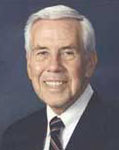 California Governor Arnold Schwarzenegger is reducing the fees his state slaps on people who collect some of the raw materials to make biodiesel for their own personal use.
California Governor Arnold Schwarzenegger is reducing the fees his state slaps on people who collect some of the raw materials to make biodiesel for their own personal use.
This story on the Best Syndication web site says The Gubernator signed a bill by Assemblyman Anthony Adams (R-Hesperia) to cut those fees:
“By reducing fees to use biodiesel fuels, more Californians will be encouraged to explore green technologies as a means of clean, safe, alternative energy,” said Adams. “The use of biodiesel fuel can help improve air quality for all Californians and decrease our dependency on foreign oil.”
Current law requires a $100 registration fee and a $300 enforcement fee per vehicle to transport inedible kitchen oil, which is used to make biodiesel fuel. These fees reduce the incentive for individuals to obtain a license to collect the inedible oil.
The measure reduces the fee for individuals to $75. The law goes into affect on January 1, 2009.


 These and other concerns prompted former veggie-oil driver Rob Del Bueno to begin brewing his own biodiesel, a product created by using methanol to chemically alter vegetable oil. Del Bueno soon learned that home-brewing fuel also was illegal, for a variety of reasons, and he went through the complex, and expensive, process of going legit.
These and other concerns prompted former veggie-oil driver Rob Del Bueno to begin brewing his own biodiesel, a product created by using methanol to chemically alter vegetable oil. Del Bueno soon learned that home-brewing fuel also was illegal, for a variety of reasons, and he went through the complex, and expensive, process of going legit. Twelve feet of water can do a lot of damage… just ask the folks at GreenHunter Energy. Their biodiesel refinery in Houston had just opened this summer has been knocked out of commission when the eye of Hurricane Ike passed nearly directly over the facility.
Twelve feet of water can do a lot of damage… just ask the folks at GreenHunter Energy. Their biodiesel refinery in Houston had just opened this summer has been knocked out of commission when the eye of Hurricane Ike passed nearly directly over the facility. Through the immediate and tireless efforts of our staff and management team, the refinery has been substantially cleaned of layers of mud, spilled materials, and debris from the flood. Repairs were commenced within one week of Hurricane Ike’s landfall strike. Major mechanical and operational components of the refinery remain intact. The receipt and installation of necessary electrical components from third parties is the primary reason for delay in restarting operations. It is anticipated that the U.S. Coast Guard will approve our barge docking facilities for resumption of operations, enabling the Company to begin moving products and feedstock early this week. The Company continues on target to meet the estimate of resumption of operations on or before October 31, 2008.
Through the immediate and tireless efforts of our staff and management team, the refinery has been substantially cleaned of layers of mud, spilled materials, and debris from the flood. Repairs were commenced within one week of Hurricane Ike’s landfall strike. Major mechanical and operational components of the refinery remain intact. The receipt and installation of necessary electrical components from third parties is the primary reason for delay in restarting operations. It is anticipated that the U.S. Coast Guard will approve our barge docking facilities for resumption of operations, enabling the Company to begin moving products and feedstock early this week. The Company continues on target to meet the estimate of resumption of operations on or before October 31, 2008. 

 The goal of the American Seed Research Summit was to bring together research leaders from industry, academia and government to identify major seed research challenges and to develop a national strategy and action plan to solve those challenges.
The goal of the American Seed Research Summit was to bring together research leaders from industry, academia and government to identify major seed research challenges and to develop a national strategy and action plan to solve those challenges. 


 The legislation, authored by Senate Foreign Relations Committee Ranking Member Dick Lugar, would promote accelerated development of sustainable biofuels and other renewable energy production, help establish voluntary carbon trading markets, leverage private investment in new energy, promote research, and further integrate the Hemisphere’s energy infrastructure.
The legislation, authored by Senate Foreign Relations Committee Ranking Member Dick Lugar, would promote accelerated development of sustainable biofuels and other renewable energy production, help establish voluntary carbon trading markets, leverage private investment in new energy, promote research, and further integrate the Hemisphere’s energy infrastructure. The first presidential debate between Republican Sen. John McCain and Democratic Sen. Barack Obama just wrapped up, and I have to say I was a little disappointed in how little renewable energy was part of the conversation. I know that it was a debate on foreign policy, but what could be bigger on our foreign policy than reducing our dependence on foreign oil?
The first presidential debate between Republican Sen. John McCain and Democratic Sen. Barack Obama just wrapped up, and I have to say I was a little disappointed in how little renewable energy was part of the conversation. I know that it was a debate on foreign policy, but what could be bigger on our foreign policy than reducing our dependence on foreign oil?